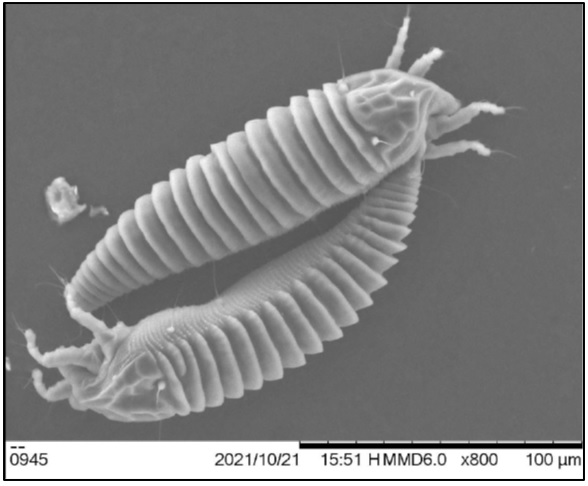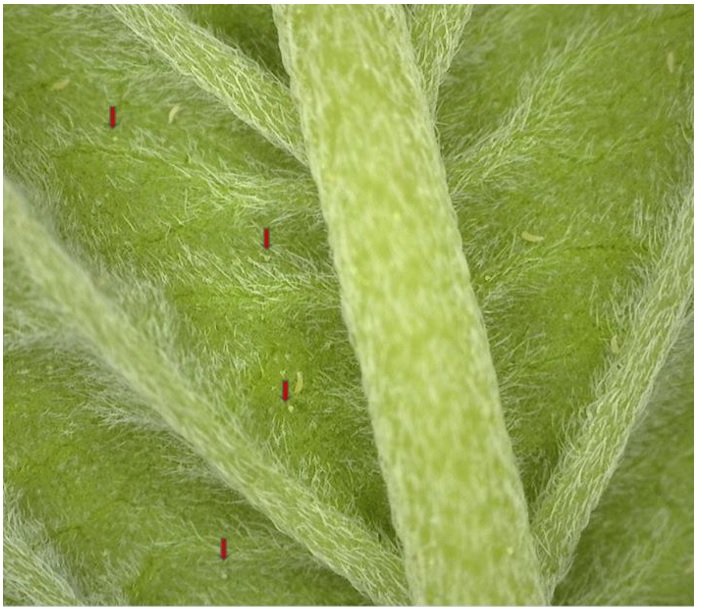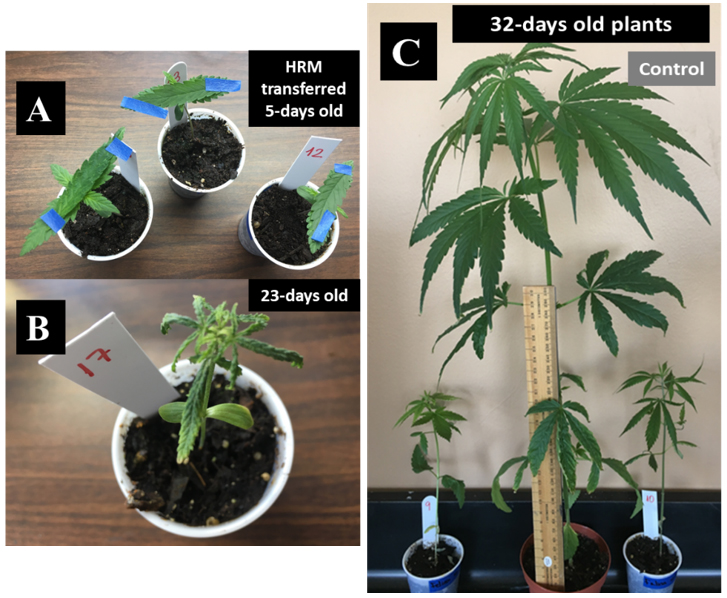Hemp Russet Mite, a Key Pest of Hemp in Kentucky
ENTFACT-162: Hemp Russet Mite, a Key Pest of Hemp in Kentucky | Download PDF
Raul Villanueva*, Zenaida Viloria*, Ronald Ochoa** and Andrew Ulsamer**
*University of Kentucky Research and Education Center and ** Systematic Entomology USDA-ARS
Description and Biology
The hemp russet mite (HRM) Aculops cannabicola (Farkas, 1960) (Acari: Eriophyidae) is identified as one of the most damaging sap-sucking arthropods in industrial hemp (Cannabis sativa L.). Hemp russet mite is minute (110-210 µm in length) (Figure
1), with yellowish to pale white, wormlike body. Unlike spider mites (Acari: Tetranychidae), it has two pairs of legs in nymph and adult stages. The bodies of most eriophyid mite species have two parts: the gnathosoma or anterior part including the head, mouthparts, and legs, and the idiosoma that is covered with many transverse ridges (Figure 1). The life cycle is completed in one week and they can live up to 30 days. The eggs are microscopic and after hatching HRM goes through two nymphal stages before reaching the adult stage (Figure 2). Like most eriophyids, HRM is highly host specific, with cannabis and hemp plants as its hosts.
Hemp russet mites prefer the lower (abaxial) leaf surface, however, as population increases, individuals spread to upper leaf surface, petiole, stem, peduncle, pedicel, and flower buds. Population densities of HRM peaks in apical meristems, hampering plant growth (Figure 3) or causing death, especially in young seedlings and early-stage hemp clones.
Figure 1. Electron microphotography of hemp russet mites from the UK-REC mite colony (Photo by Andrew Ulsamer, USDA-ARS)
Injuries
Hemp russet mites cause damage by piercing epidermal cells, with specialized mouth part called cheliceral stylets, and removing cell contents. Typical symptoms of high HRM infestations frequently include upward or downward curling of leaf edges (Figure 4A), and bronzing/rusting appearance of leaf tissue (Figure 4B). Severely damaged plants show brown/tan powder-like substances on leaf and stems caused by cast skins or exuviae (Figure 5). High populations occur in protected production systems as well as in open fields, and severe injury to flower buds can reduce flower size and cannabinoid yields. In hemp grown outdoors in Kentucky, high HRM populations are observed from August to October, which coincides with the inflorescence development.
Management
The best management practice is to start a crop with healthy propagules or clones. Hemp plants are propagated by seeds or cuttings under intensive production systems in greenhouse. High temperature and high relative humidity during hemp plant propagation also promote HRM reproduction, thus high densities can disperse quickly due to the ventilation system of greenhouse. It is likely that this pest can be carried on hemp propagules as both eggs or mobile forms. It is relatively easy to sample plants before transplanting to make sure HRM is absent or present at low numbers.
Pesticide regulations and limited availability of registered acaricides hinder the management of HRM. As of December 2021, the Environmental Protection Agency (United States EPA) has approved 58 biopesticides and 1 conventional insecticide/miticide for hemp pest control (EPA website). Please check the list of pesticides for hemp registered in Kentucky.
Figure 2. Hemp russet mites: eggs, immatures and adults (Photo Zenaida Viloria)
Pesticide evaluations must be performed to determine the acaricidal efficacy of registered products to manage HRM in indoor and outdoor conditions. Several pesticides have been tested in laboratory and fields of the University of Kentucky’s Research and Education Center. In 2021, a mineral oil-based and biological-based products were the most effective. Information and rate of these products are listed in Table 1.
Figure 3. (A) Hemp russet mite transferred to 5-day old seedlings, (B) a hemp seedling showing severe damage caused by hemp russet mites, and (C) stunted hemp plants (32-days old) compared with hemp plant free of hemp russet mites (middle) of the same age.
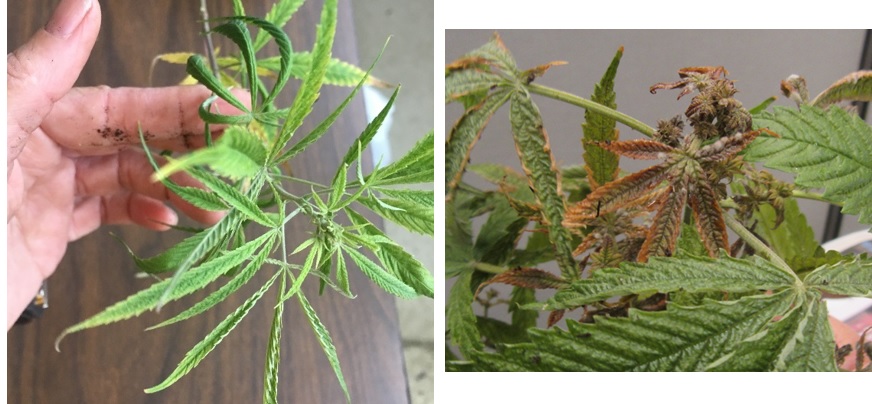
Figure 4. Hemp russet mite damages in foliage. Bronzing, russeting and upward and downward leaf edges.
Table 1. Effective products for the management of the hemp russet mite in Kentucky†.
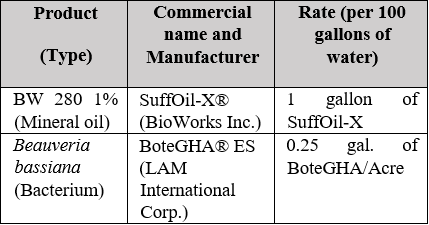
† Mention of a trade names is not an endorsement.
Issued: 5/22
CAUTION! Pesticide recommendations in this publication are registered for use in Kentucky, USA ONLY! The use of some products may not be legal in your state or country. Please check with your local county agent or regulatory official before using any pesticide mentioned in this publication.
Of course, ALWAYS READ AND FOLLOW LABEL DIRECTIONS FOR SAFE USE OF ANY PESTICIDE!
